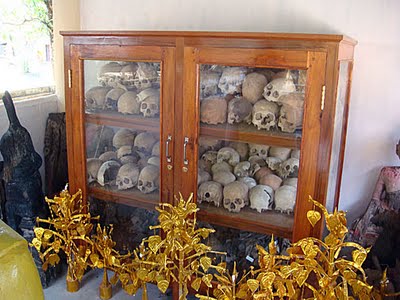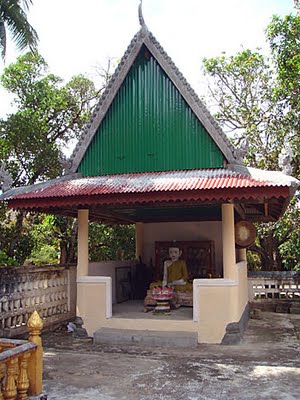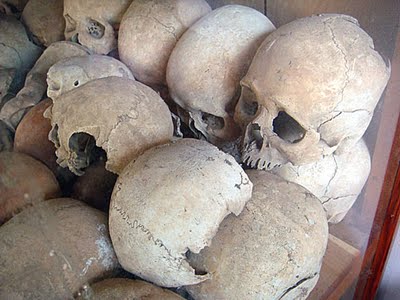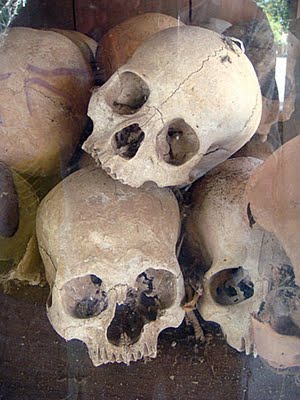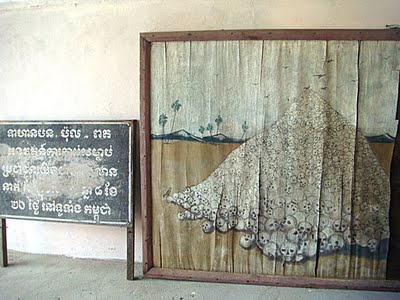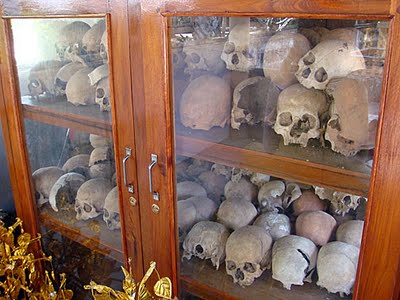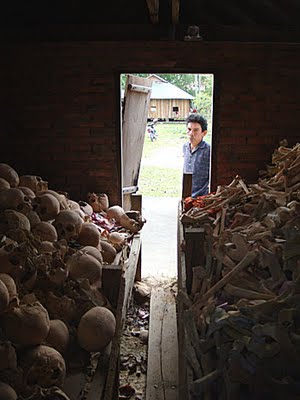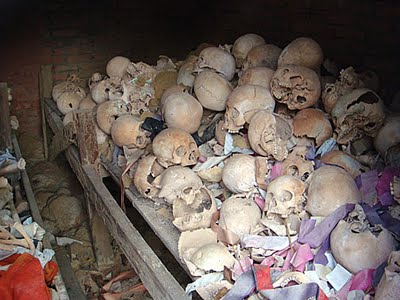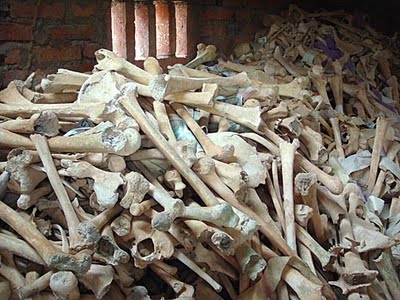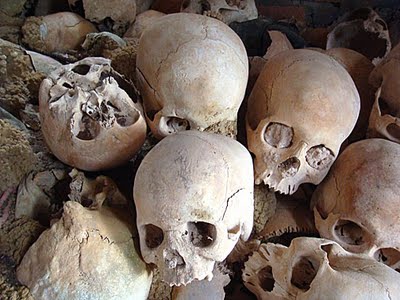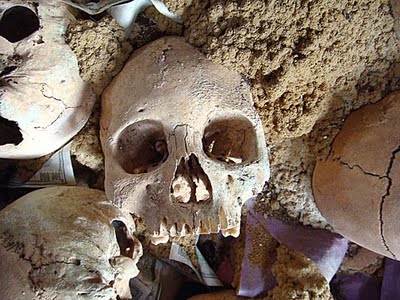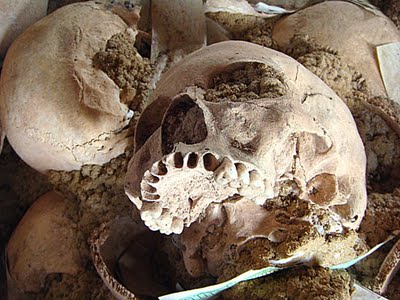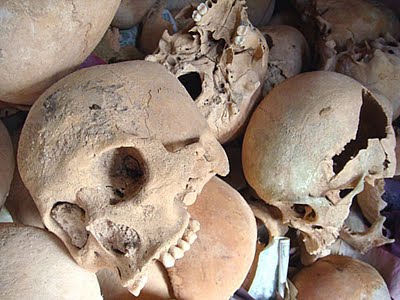Face to face with the past
I was able to visit another of the genocide memorials that are dotted around the Cambodian countryside as I made my way from Kampot to Kep yesterday. About five kilometres after leaving Kampot, the village of Chumkriel and its pagoda holds a secret I haven't yet got to the bottom of. Housed no more than ten metres from the vihara of Wat Chumkriel are the remains of about 100 unknown victims of the Khmer Rouge regime, which are kept in a new wooden memorial behind a seated Buddha. The head monk was asleep and couldn't be disturbed and the young monks I met had no idea of the history behind the skulls and bones contained within the wooden case. DC-Cam suggest in a report from the site in 1995 that the bones were brought from other burial sites in the Kampot district but that's where the trail runs cold. Two rows of skulls and one of bones lie in the case with old wooden Buddha statues next door to them. After leaving Wat Chumkriel, I made a return visit to Wat Kompong Tralach, a memorial I had visited before, just past the White Horse statue, on the way to Kep. This had been the site of two mass graves and the bodies of about 750 victims were believed to have been deposited in the memorial when it was constructed. Today, the shabby cement stupa contains two shelves of skulls, bones and a large termite mound and is in poor condition. These are two of the 80 or so genocide memorials in Cambodia, erected at the end of the Khmer Rouge regime as a permanent reminder of the atrocities they carried out. Many have fallen into disrepair through neglect.
Labels: Wat Chumkriel, Wat Kompong Tralach
